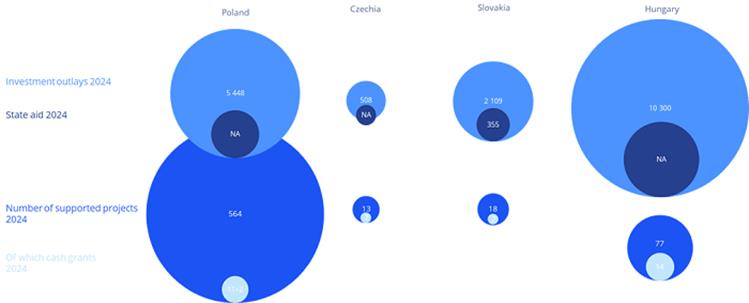
21. 5. 2025
How do CEE countries attract investors to their markets?
"Landlords often overlook the existence of incentives, although in some locations they can, for example, take advantage of property tax exemptions. In most Central and Eastern European countries, tenants take incentives into account when deciding on a location: the differences between incentive levels can be up to fivefold," says Josef Stanko, Director of Market Research at Colliers. Some forms of state support, such as property tax exemptions or support for energy efficiency improvements, can be used directly by developers and property owners. This means real savings and the possibility of a more competitive offer to potential tenants.
Large manufacturing companies and business service centres, in particular, consider the availability of public support as a key factor when choosing a location. If two properties are comparable in terms of cost, location and labour availability, but one is located in a region that offers a higher level of support, the chances of renting the one subject to state support incentives increase significantly. For example, one of Colliers' clients was considering two sites: one on each side of the Hungary-Slovakia border. With similar property costs, the client ended up choosing the site in Hungary where they could get triple the government support in the form of a subsidy instead of the tax exemption offered in Slovakia. Another advantage for locating in Hungary was lower labour costs.
How state support for investment differs in CEE countries
State support policies vary considerably across CEE countries – both in terms of their levels and availability:
- The Czech Republic takes a more conservative approach, preferring to support high value-added investments such as R&D centres. It offers investors corporate tax exemptions and additional subsidies for R&D investments.
- Poland offers the most transparent but, at the same time, the most complex system of state aid. Aid levels, minimum investment amounts and eligibility conditions may vary even at the level of neighbouring municipalities. In extreme cases, the differences in minimum investment can range from around 50 to over 500 million CZK and the level of support for state subsidies anywhere from 5 to 15%. The support system is available to both multinational and local SMEs.
- Hungary and Slovakia use a negotiated approach, where each company starts the application process from scratch and only rarely receives the maximum possible level of support. The investment process can be less predictable, but unique conditions can be negotiated for strategic projects.
Colliers' data shows that Poland leads in terms of the number of projects receiving state support, while the Czech Republic is the worst performer. In 2024, 564 projects were supported in Poland, 77 in Hungary, 18 in Slovakia and only 13 in the Czech Republic.
Colliers regularly analyses the level of incentives and support available in CEE countries and assists investors with the preparation and submission of applications. Its latest report "How Government Incentives Shape Industrial & Office Real Estate" provides a detailed comparison of support opportunities in the region.

